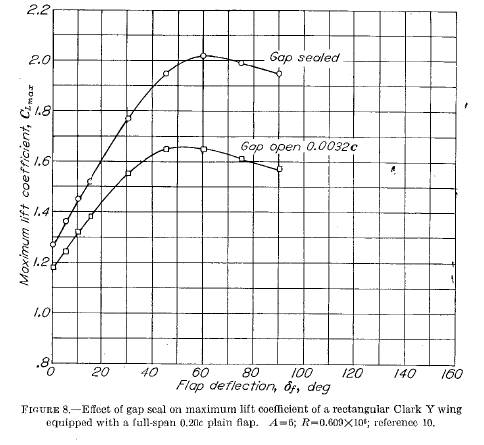I understand the Alaskan bush pilots use 90° flaps in the Valdez STOL competition. I think this would stall the flaps. And if so, it wouldn't increase lift and reduce stall speed, but Javafoil says the opposite.
Perhaps this is more for lift/lower stall speed than drag. Since they land flat halfway down a long runway they don't need drag to slow down.
Just to do a test, I input a NACA 2415 foil in javafoil, 25% chord flap, 90 deg flaps deflection. And as expected, lots of drag, but Clmax jumps from 1.5 to 5 at about 0 deg AOA.
Is this realistic? If not, what is the real Clmax?

